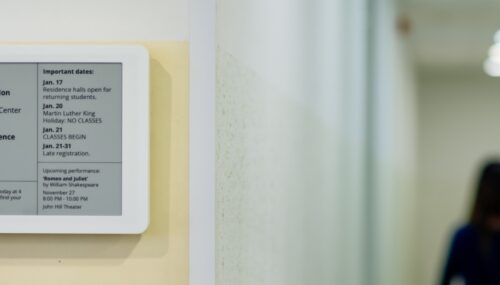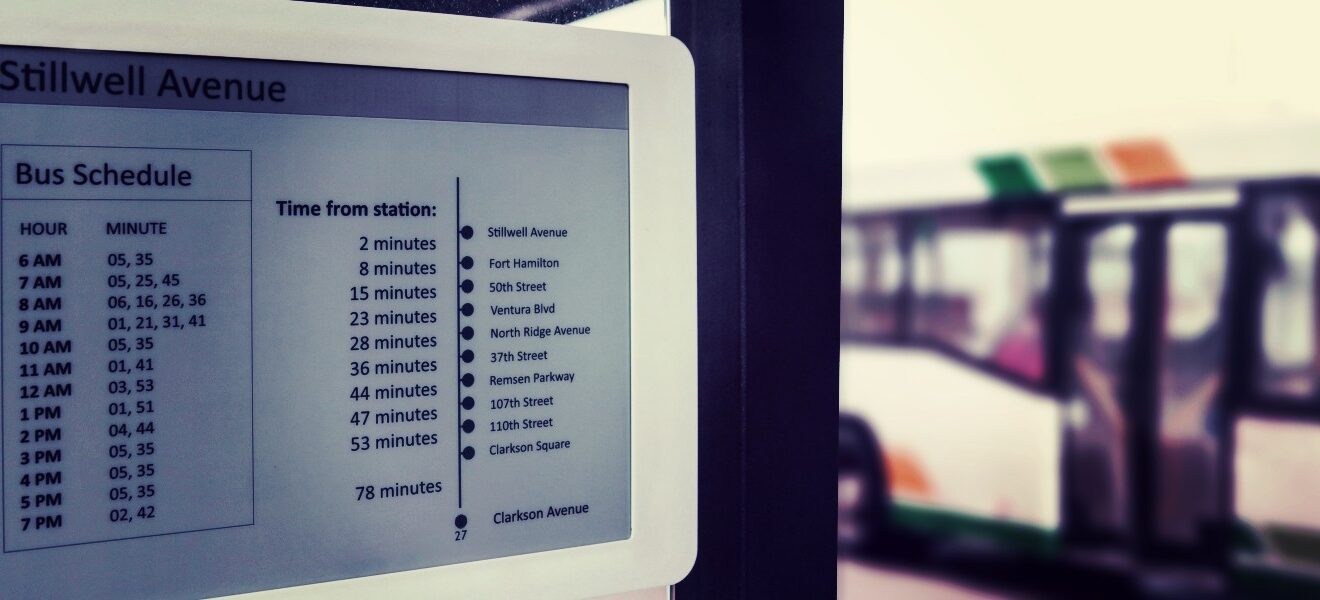

Don’t throw passengers under the bus: transport info on e-paper
Visionect, 9 Dec 2014
Electronic paper displays mounted at bus stops allow bus operators to show real-time info on everything from bus arrivals, to bus routes, relevant schedules and important notifications about service conditions.
Outdoor displays mounted at bus stops allow bus operators to display transparent and easily understandable real-time information about their service.
Imagine a bustling city of let’s say 2 million people. There would have to be some 60 public bus routes to efficiently cover the whole of the inhabited area; if we say that the bus made a stop every 5 minutes or so, can you imagine how many bus stops there would have to be in this metropolis to provide an efficient public bus transport system?
Now imagine the hassle and expense of manually updating thousands of bus stops with the latest information on the bus service. Driving back and forth with printouts of the latest schedules and updates, making sure that all of the notices are readable and up to date is not just a logistical nightmare, it’s also a financial one. Keeping passengers regularly updated is no easy matter, especially if you are not dealing with a big station that is the intersection of different public transport routes, but rather a network of numerous, single remote stops of just a line or two.
Providing advanced passenger information
In an effort to tackle the issue, several bus transport providers around the world have been implementing vehicle tracking schemes that make it possible to provide their commuters with real-time advanced passenger information.
LOWERING OPERATING EXPENSES AND IMPROVING DAILY USE
A good overview of the service offered allows operators take proactive control of their fleets, lowering operating expenses (no costly manual updates of bus schedules necessary), as well as providing better service and retaining passengers in the world of ever-new transport possibilities (Uber, anyone?).
In fact, studies as far back as 2003 have shown that advanced passenger information systems improve the quality and the day-by-day use of urban public transport, at the very least assisting in the maintenance of ridership, reducing commuter stress and improving overall commuter satisfaction.
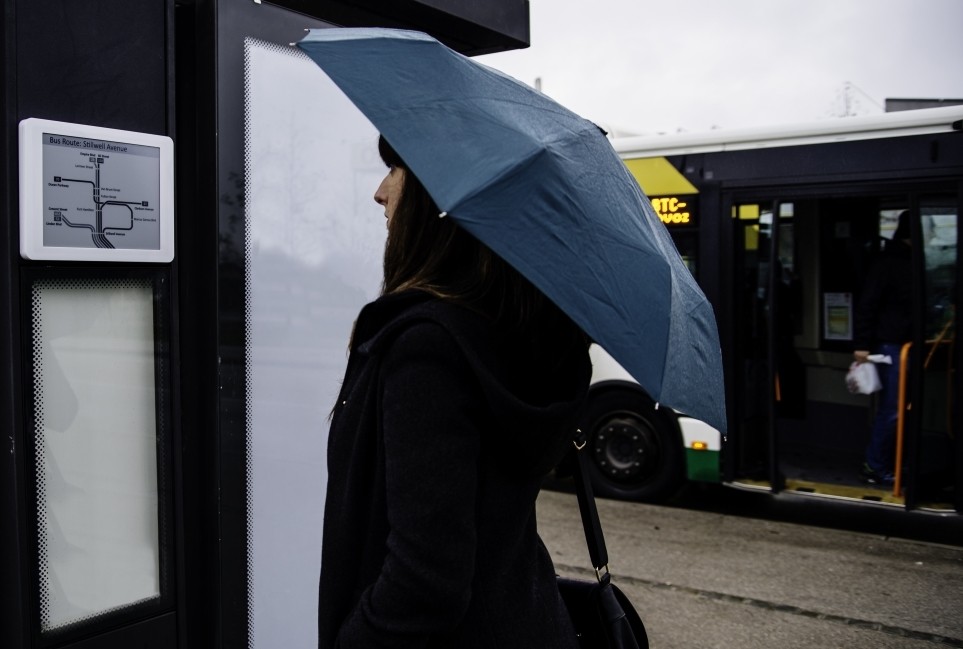
Reducing commuter stress with transparent information.
A good bus stop signage solution has to feature low power consumption, a great battery life, the option of alternative power sources, and have high readability.
Better experiences for riders also have a tendency of translating into higher numbers of passengers and greater revenues for public bus service providers. In Chicago for example, the bus tracking scheme resulted in an increase of 1.8 to 2.2 percent in the number of passengers in the months following the implementation of the service.
All-inclusive at-station displays
Instead of systems that rely on the passenger having to call a dedicated number or use a particular app or website to receive the latest details of the bus service, bus operators are often turning to at-station digital displays.
Outdoor displays mounted at bus stops allow bus operators to display transparent and easily understandable real-time info on everything from bus arrivals, to bus routes, relevant schedules and important notifications about traffic and service conditions.
Displays reach all segments of passenger, including those that might not be able to clearly read or reach the sea of printed information made available, or do not have access to a phone or the internet to find the data they need.
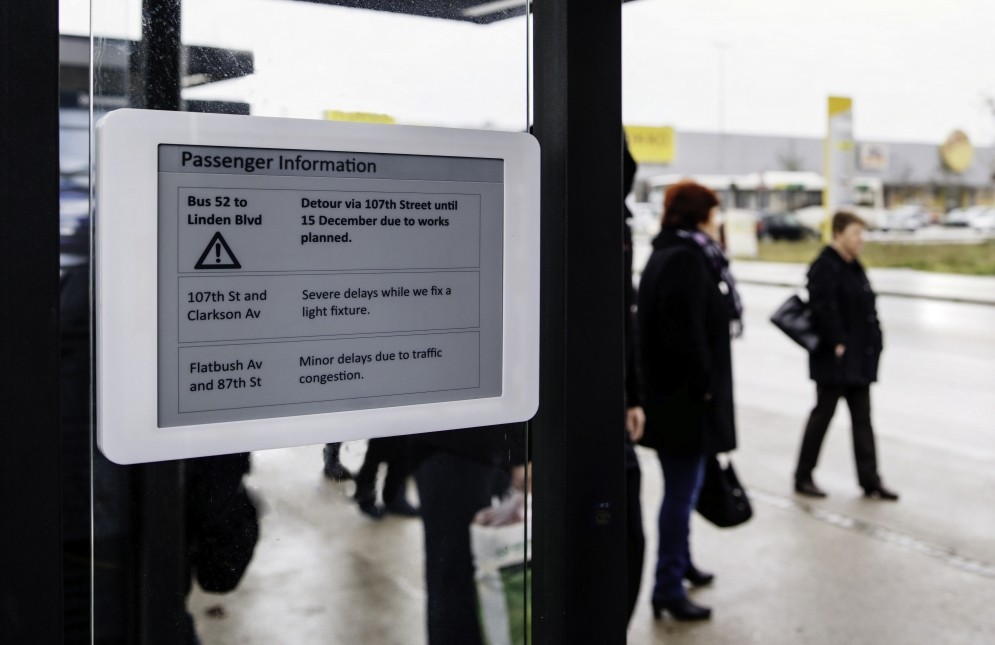
Keeping in mind all users of the bus service.
Asking the right questions
When implementing a digital display solution to be mounted at a bus stop, however, several sides of the same issue should be considered. There are important questions about the display itself that need to be asked as well.
AVOIDING LIGHT POLLUTION AND PROVIDING HIGH READABILITY
First of such questions on the agenda: is the digital signage well-suited to use outdoors? Will it showcase the message at the bus stop clearly?
One of the best choices for outside use are electronic paper displays, working properly in all kinds of weather, from rain and snow to the heat of summer days in the city. Boosting perfect readability no matter the light conditions, they can be easily deciphered, avoiding the confusion of glaring text slowly scrolling by on traditional at-station displays.
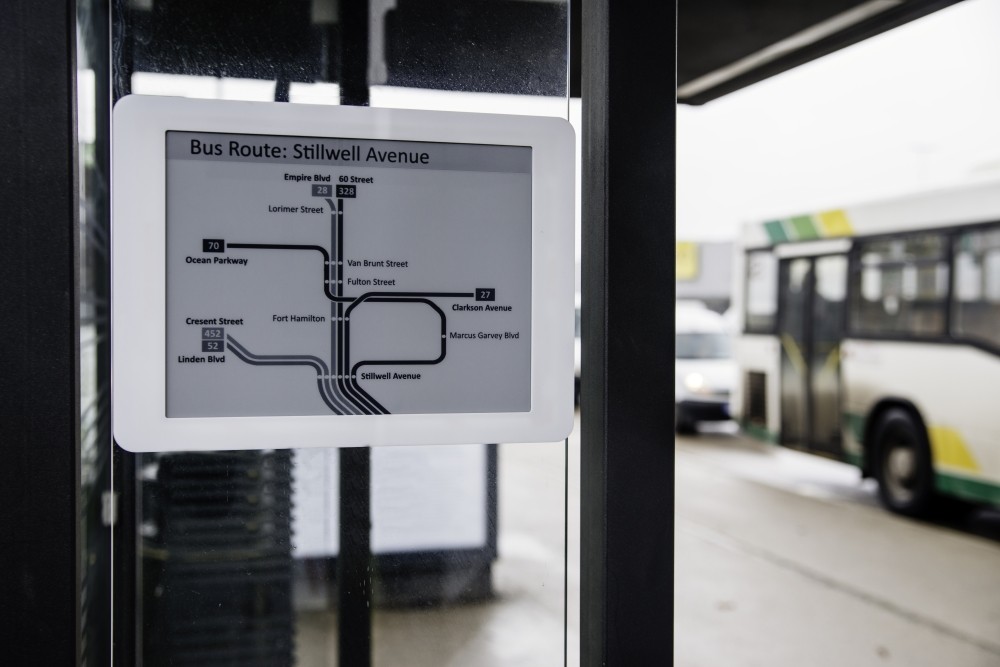
Perfect visibility even in crummy weather.
Electronic paper will blend with its surroundings, not emitting any unnecessary glare or light pollution. Thin, elegant and discreet it becomes part of the bus stop and not just something that has been hastily added to the design of the street furniture.
LOW ENERGY CONSUMPTION AND CENTRALIZED UPDATING
Also important to ask: how will the information on all of the displays mounted be updated and will it cost more to keep the displays on than it does not to have them? How will the displays be powered?
Using an electronic paper platform as the bus service info medium, you are implementing a solution that features extremely low power consumption; if powered by the solar cell, the sign can even be completely self-sustainable. E-paper displays also allow for completely cableless mounting, meaning that the EPD can be seamlessly integrated into the bus stop itself.
Connecting through 3G network, refreshing the passenger information displayed is a hassle-free process, seamlessly happening in real-time and requiring very little extra effort on the operator’s part.
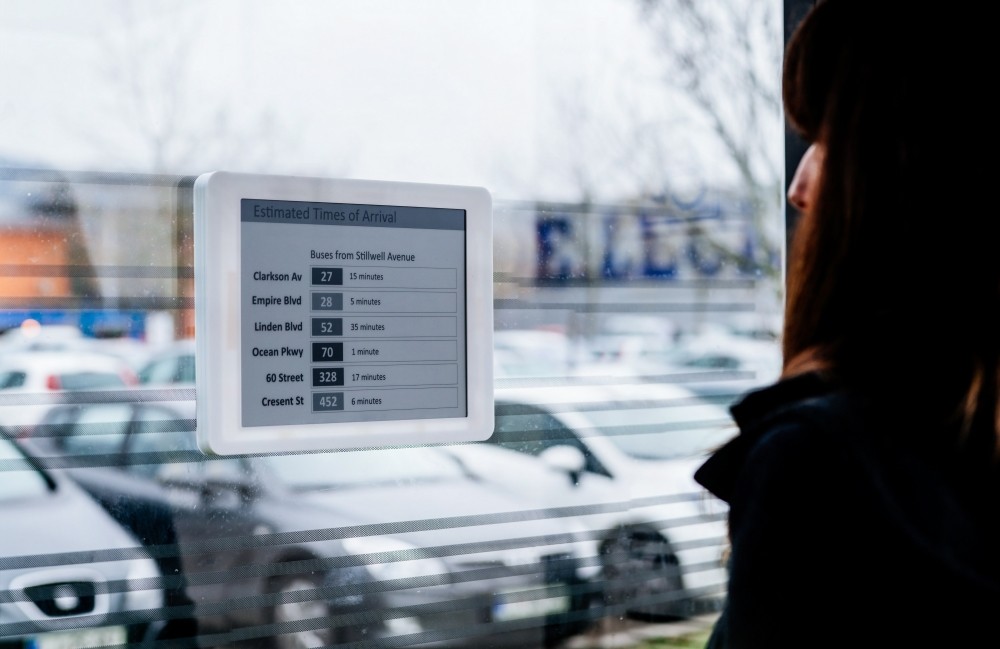
Continuously providing the latest updates, as they happen.
If you’re gonna do it, do it right
At Visionect we have been helping our clients and partners develop their own electronic paper solutions for a while now.
Providing an advanced e-paper platform on which custom digital signage can be realized, we have been involved in multiple public transportation projects. That includes self sustainable traffic signs with dynamic content on digital screens and, as is the case here, an advanced passenger information display mounted at a busy bus stop.
We know that a good bus stop signage solution has to check several boxes: it has to feature low power consumption, have a great battery life, the option of alternative power sources, and be self-sustainable with high readability, not to mention have 3G connectivity and no cables whatsoever.
After all, if you’re gonna do it, do it right.
Tags

